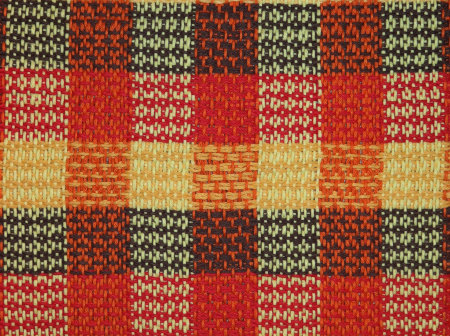Change is in the air! I'm revamping this page, so it's changing
frequently.
Initially, I was going to call this blog post "Crackle Weave: Treadling,"
because treadling seemed like the next topic in a logical progression of
notes:
Except with crackle, there's so much more to it. Treadling is where the fun
begins because this is when the patterns reveal themselves on the loom. But
also part of the equation are yarn choices (colors, number, and types of weft,
etc.) plus the way it's threaded. So I changed the name of the post to better
reflect that.
This page has evolved over time to become an index of sorts. Each example is
(i.e. will be, as I update the page) linked to pages discussing the
particulars of each manner of weaving, plus more examples of the variations.
Classic Crackle

|
| Bathmat in 4-ply cotton |
Summery: Classic crackle is woven with 3-shuttles, using a pattern
and two background wefts instead of tabby. It's popular for color weaving as
different colors can be used on each shuttle. Details and more
examples here.
Overshot Manner (also called traditional crackle)

|
| threading - Scandinavian Favorite |
Summary: Overshot manner crackle is woven with 2 shuttles, alternating
pattern and tabby wefts. This is probably the most popular form of crackle.
Details and more examples
here.
As-Drawn-In (also called tromp-as-writ)
- treadling simply follows the threading draft
- uses two shuttles
- alternates pattern and tabby wefts
- pattern weft - contrasting color to warp and tabby wefts and heavier
- tabby weft - same as warp (but may be different color)
Plain Weave

|
| threading - Scandinavian Favorite |
- one shuttle weave (no tabby)
- alternates plain weave sheds: 1 & 3 and 2 & 4
- typically used to start or finish off a warp
- threading pattern is pretty much lost with plain weave treadling
As Twill
Summery: Crackle is a twill based structure, so any of the balanced
(2/2) twill treadlings will work. It can be woven with or without tabby.
More examples and details
here.
Polychrome (poly= many, chrome = color)
Summary: Methods of treadling that produce blocks of color side by
side. More examples and information
here.
On Opposites

|
| "Cottage Windows." An on-opposites pattern produced from opposite pattern blocks. |
Italian Manner (also called Italian style or Italian method)
- three shuttles
- one pattern weft (often the heaviest yarn)
- two background wefts (called "a" and "b," and typically similar in size to the warp)
- often a three-color weave
- pattern is typically one color
- background wefts can be two different colors or the same
- various methods of treadling
- can be applied to a variety of weave structures
- treadling sequence is four shots
- Pattern
- Background A
- Pattern
- Background b
- background wefts use opposite sheds between the pattern shots, either
- 1-2 and 3-4
- 1-4 and 2-3
- no tabby. The Italian manner replaces tabby with a different set of opposite sheds.
- emphasis is on color
- The color sequence remains consistent throughout, it is the treadling that progresses with each block. Eg.
- A alternates 1-2 and 3-4
- B alternates 2-3 and 4-1
- C alternates 3-4 and 1-2
- D alternates 4-1 and 2-3
- can also be woven with one or two shuttles
- See The Italian Manner for more details
There are others, but I'm going to stop here for now, as this will give me
plenty to work on. Hopefully, I can add more in the future. Also, I
plan to add photos of each as I work my way through them.


2 comments:
What a wonderful article on Crackle, which is my absolute favourite to weave of late. There seems to be so many ways to treadle the weave structure that just I could play around with it forever.
Lynette, thank you! I've been very impressed with your crackle scarves. Just gorgeous. I am really looking forward to experimenting with it.
Post a Comment